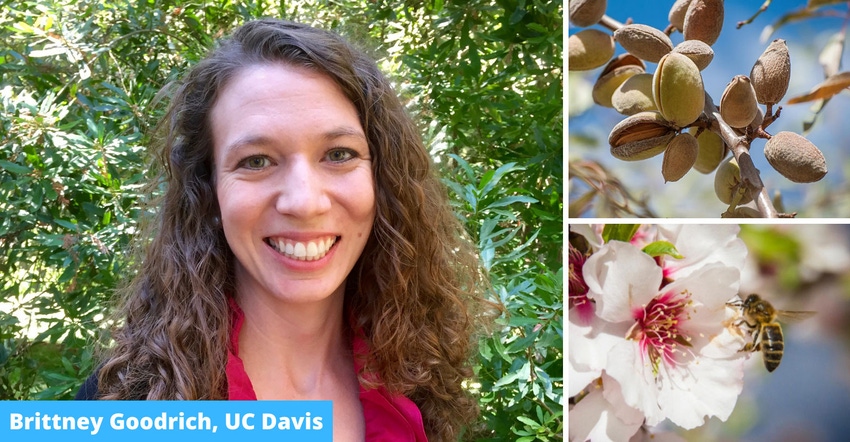February 3, 2021

Sponsored Content
I am excited to join the Certis USA Ask the Expert team for tree nut growers in my home state of California. John Wood is a fantastic colleague and I’ve been following his commentary for awhile, so it’s great to be a part of that experience first-hand now.
As we are starting to prepare for the 2021 growing season and ramp up our efforts to make it successful, I know that there are so many factors that can affect that success. Inputs and markets. Hard costs and soft costs. All of those can cause stress, especially as we are looking into a new season.
That’s why, for my first column, I sought the advice of Brittney Goodrich, Assistant Cooperative Extension Specialist with UC-Davis’ Agricultural and Resource Economics College of Agricultural and Environmental Sciences. In her role there, Brittney researches economics of sustainable agricultural management, and I thought she could shed some light on all the many outside factors that impact our growing season.
A key focus for Brittney and many of the growers I’ve talked to early in this season are market prices, specifically for almonds and walnuts.
“Prices are pretty low right now,” Brittney told me. “With prices low, growers are going to be trying to cut input costs. That’s going to be a big theme for almond and walnut growers, in particular, this year.”
One area where Brittney cautions against cost-cutting is in almond pollination fees, which have increased dramatically. Unfortunately, almond bloom is coming up soon and the wet weather isn’t cooperating with bee placement in orchards, which is causing more stress for almond growers and beekeepers alike.
“In general, almond pollination fees have increased substantially over the last couple of decades,” Brittney says. She shared that in 2002, 8 percent of a grower’s annual operating costs would go towards pollination expenses and now it’s a whopping 15-20 percent. Many growers are paying well over $200 per colony right now.
It turns out to be a case of supply and demand. More almonds mean more bees are needed for pollination.
According to Brittney, we’re utilizing more than 80 percent of total honeybee colonies in the US for almond production. She says nearly all commercial beekeeping operations have a hand in almond pollination these days.
Looking ahead, she says she doesn’t see that leveling out, either, which means you are facing tough choices.
“I know that almond prices are not great right now, and so growers may be questioning why they are paying $200 per colony for pollination when prices are low,” she says.
“I stress to growers that it’s really a long-run game. You want to make sure you are paying your beekeeper adequately because they are reliant upon almond pollination revenues for their economic longevity.
It's good for growers to keep in mind that we are using a lot of colonies, and it’s really important to have that dependent colony supplier year after year. Maybe pollination is not the expense to cut this year or in coming years.”
Looking more long-term, it’s difficult for us not to wonder how the ongoing COVID pandemic will impact our tree nut industry. In 2020, Brittney authored a paper saying that the tree nut industry was well-suited to weather the storm. I wondered if she still felt that way nearly a year later.
“This is going to be analyzed for many years to come,” she says. “I would say, overall, the tree nut industry has been very resilient to the disruption caused by COVID.”
She says that the resilience comes from a couple of advantages, including the mechanization in production throughout the supply chain and the long shelf life of the nuts themselves.
Brittney also indicated to me that you tree nut growers have fallen victim to the trade uncertainties over the past few years and it’s hard to untangle the pandemic from those trade wars.
“Domestic consumption of tree nuts has increased fairly substantially. A lot of that is due to the pandemic, but it remains to be seen how much exactly,” she says, noting that the increases are coming from changes in consumer behavior during the pandemic.
She says she’s watching the pandemic-induced recession to see how it will impact tree nut marketing and international trade; but she remains hopeful because food products are usually less affected by lowered household income.
I’m extremely grateful to Brittney for sharing her insight with us as we plan for this upcoming growing season.
If you have any questions about this info, please never hesitate to reach out to us at [email protected] and you can check out more about Brittney and her work at www.brittneygoodrich.com.
In the meantime, I’m glad to be part of your team for this growing season! Looking forward to sharing more soon.
You May Also Like




